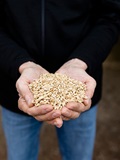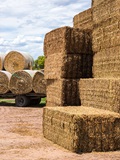South West Victoria
20 May 2020
| Date | SW 23 | SW 22 | SW 5YA |
|---|---|---|---|
| 06-Jan-23 | 292 | 200 | 225 |
| 13-Jan-23 | 300 | 200 | 233 |
| 20-Jan-23 | 313 | 200 | 233 |
| 27-Jan-23 | 323 | 200 | 234 |
| 03-Feb-23 | 323 | 200 | 236 |
| 10-Feb-23 | 333 | 200 | 232 |
| 17-Feb-23 | 333 | 200 | 229 |
| 24-Feb-23 | 333 | 200 | 225 |
| 03-Mar-23 | 333 | 200 | 225 |
| 10-Mar-23 | 333 | 200 | 228 |
| 17-Mar-23 | 338 | 200 | 229 |
| 24-Mar-23 | 343 | 200 | 229 |
| 31-Mar-23 | 343 | 200 | 238 |
| 07-Apr-23 | 343 | 200 | 238 |
| 14-Apr-23 | 343 | 200 | 238 |
| 21-Apr-23 | 343 | 200 | 236 |
| 28-Apr-23 | 345 | 200 | 234 |
| 05-May-23 | 345 | 200 | 234 |
| 12-May-23 | 345 | 200 | 237 |
| 19-May-23 | 345 | 200 | 239 |
| 26-May-23 | 345 | 200 | 250 |
| 02-Jun-23 | 345 | 200 | 253 |
| 09-Jun-23 | 345 | 200 | 253 |
| 16-Jun-23 | 343 | 200 | 253 |
| 23-Jun-23 | 340 | 200 | 273 |
| 30-Jun-23 | 335 | 200 | 259 |
| 07-Jul-23 | 330 | 205 | 260 |
| 14-Jul-23 | 330 | 205 | 259 |
| 21-Jul-23 | 330 | 205 | 260 |
| 28-Jul-23 | 320 | 205 | 262 |
| 04-Aug-23 | 315 | 205 | 264 |
| 11-Aug-23 | 305 | 205 | 261 |
| 18-Aug-23 | 305 | 205 | 249 |
| 25-Aug-23 | 305 | 205 | 250 |
| 01-Sep-23 | 305 | 205 | 255 |
| 08-Sep-23 | 205 | 260 | |
| 15-Sep-23 | 205 | 253 | |
| 22-Sep-23 | 203 | 253 | |
| 29-Sep-23 | 200 | 252 | |
| 06-Oct-23 | 198 | 252 | |
| 13-Oct-23 | 198 | 242 | |
| 20-Oct-23 | 203 | 243 | |
| 27-Oct-23 | 203 | 243 | |
| 03-Nov-23 | 203 | 241 | |
| 10-Nov-23 | 203 | 242 | |
| 17-Nov-23 | 210 | 243 | |
| 24-Nov-23 | 240 | 248 | |
| 01-Dec-23 | 244 | 244 | |
| 08-Dec-23 | 248 | 245 | |
| 15-Dec-23 | 263 | 243 | |
| 22-Dec-23 | 268 | 244 | |
| 29-Dec-23 | 284 | 249 |
Notes:
Change in price is the change since the last report. Hay quoted is sourced and delivered locally, GST exclusive unless stated otherwise. It should be noted that local prices quoted may not be the cheapest available, sourcing it from another region may be more affordable, and buyers are encouraged to evaluate all options. Prices are indicative to a mid-range shedded product, and based on the best indication of market value at the time of reporting. It should be noted there is a wide variation in quality of hay, prices for a mid-range product will not reflect the weighted average of trade. Prices will naturally vary based on the product quantity and quality, buyer/seller relationship and the size of the trade.The hay report has been commissioned by Dairy Australia to provide an independent and timely assessment of hay markets in each dairy region. This report is created using data provided by the Australian Fodder Industry Association (AFIA). It should be remembered that actual prices may vary for quality or other reasons. Whilst all reasonable steps have been taken to ensure the accuracy of the information contained in this report, Dairy Australia disclaims all liability to the fullest extent permitted by Australian law for any inadvertent errors and for any losses or damages stemming from reliance upon its content. Dairy Australia recommends all persons seek independent advice and, where appropriate, advice from a qualified advisor before making any decisions about changes to business strategy.
Commentary
- Moderate rainfall this week over the region, especially along the border with falls in between 25-50mm of rain for the week and 15-25mm of rain for the rest of the region.
- The additional rainfall across the north and east of the region increased confidence in the season.
- Dry planted crops along the border and close to the coast have now germinated and are starting to show some growth. Overall, early plantings are now coming along well with the additional rains cementing in the growth and prospects.
- Pastures of graze and grain canola varieties as well as mixed white and red clover are coming along well in the east of the region. There are also reports that hay plantings of vetch, wheat and oats have germinated well and are looking strong.
- In the north of the region high yield wheat varieties sown in late April have taken advantage of the earlier break and are showing good growth after urea application a week ago.
- Evidence of mice, still not considered to be a significant threat as sightings have occurred around sheds and storage rather than in paddocks. Monitoring is recommended and information about management is available: https://grdc.com.au/resources-and-publications/resources/mouse-management.
- Input costs continue to be a concern for all farmers across the region, many have forward contracted or had inputs delivered early to avoid further expected price increases.
- Hay enquiries have picked up slightly, but most growers are out seeding and spraying. There has been interest from dairy farmers in the drier parts of the region to build up on farm storage. Some trade into the region for contracted hay and smaller feedlots.
- No change to pricing this week.
- Cereal hay: +/-0 ($180 to $220/t). Prices remain steady this week.
- Lucerne hay: +/-0 ($330 to $380/t). Prices remain steady this week.
- Straw: +/-0 ($80 to $105/t). Prices remain steady this week.
- Pasture hay: +/-0 ($150 to $180/t). Prices remain steady this week.
- Please note: Unless stated otherwise, prices are per tonne, sourced and delivered locally. The price range indicated is for feeds of varying quality with the price range generally indicative of quality of feed. We recommend feed testing and viewing of fodder before purchase to be sure of the quality of feed.

